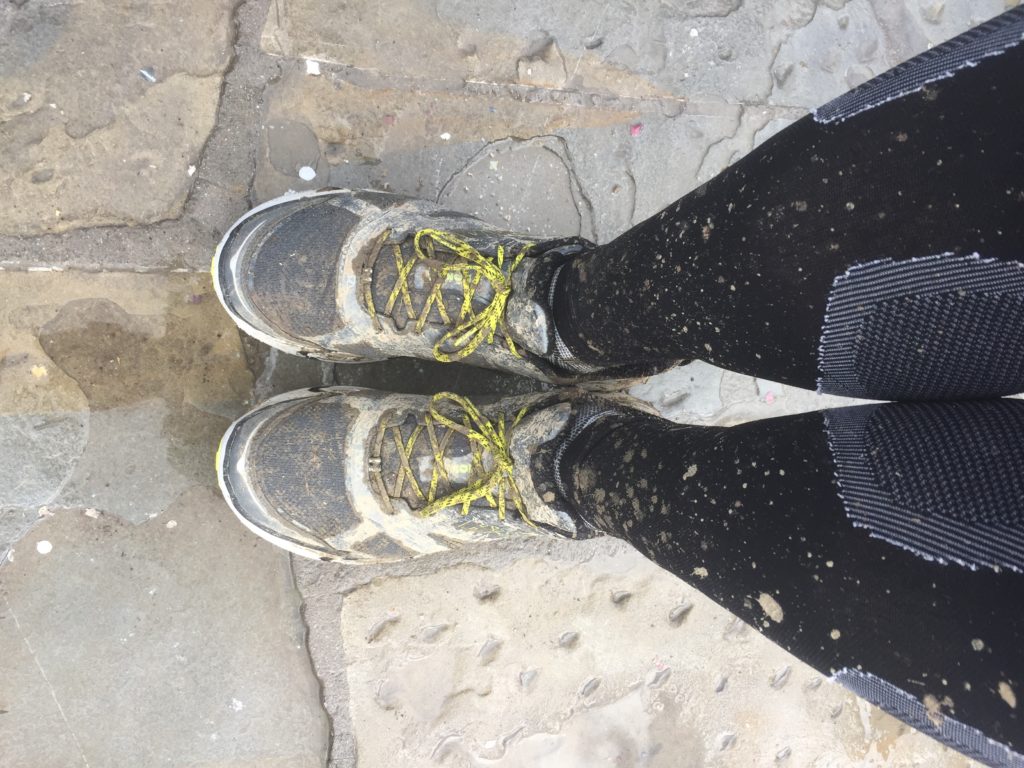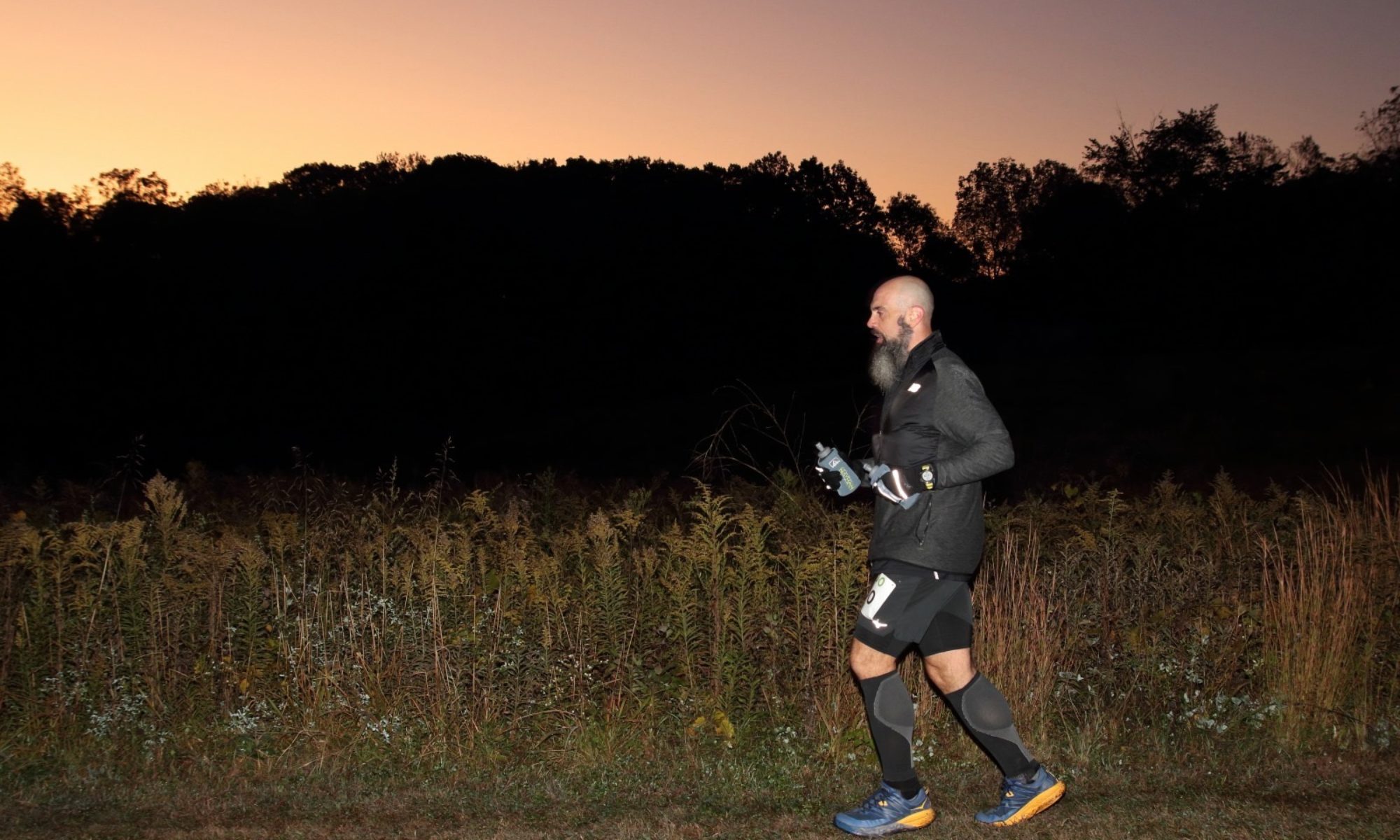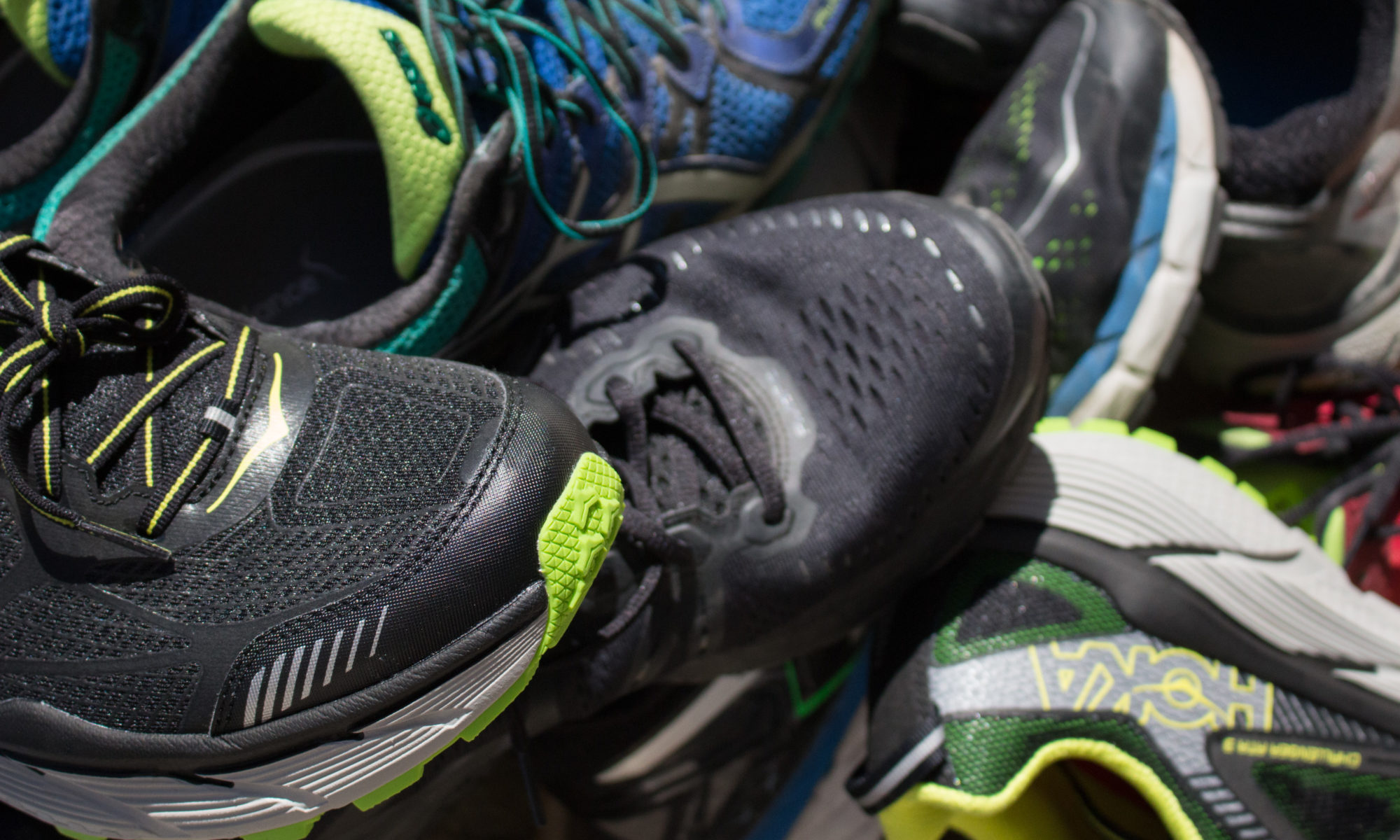If you are not a runner, you may want to skip today’s post. Unless you are curious about this kind of stuff, then you’re welcome to stick around! I am writing this post because I have gotten several requests to discuss the process. Yes, process, because there is not a correct answer to “What is the best running shoe?” I believe that you should stick with quality, but the EXACT shoe is different for everyone. Before we proceed, I am not a doctor, I am a runner. I will share with you my experiences and what has worked for me. Let’s proceed.
When I started running, I went and bought a cheap pair of running shoes, I won’t mention the brand as I am not here to review gear. Anyway, I often had shin splints, but attributed it to my weight and the fact that I was a new runner. After about 250 miles, I noticed that the insteps of both of my running shoes were worn much more then the outside portion of the shoe. It was obvious that I was landing on the big toe and instep and that the wear was more extreme on that part of the shoe. Whilst in Manchester for my first 10k, Running Brother Dave, wait for it… from England said “Fella I’m taking you to a proper running store and you’re getting a gait analysis.” I replied “Huh? That’s a thing?” I just got the eye roll.
For you newbies, a gait analysis is when they put you on a treadmill and have you run for a couple of minutes. They record your legs and feet and then play it back in super slow motion and watch how your feet and legs are moving. From all of this they determine if you are a neutral runner, an over pronator, or an under pronator. Pronation is normal and it is simply the rolling inward motion of your foot as you walk or run. If your foot rolls in excessively, you over pronate, if it doesn’t roll in the normal amount, you under pronate. Neutral and over pronation are more typical then under pronation.
This information is used to determine what type of shoe would suit you best. As an example, I am an over pronator, so I buy running shoes that provide support to my arch to help correct this. Now, as I said earlier, I am not a doctor, but my experience has been, once I bought the running shoes with the arch support, my shin splints went away. Hallelujah!
Returning to the process. I suggest that you go to a running specialty store and have a gait analysis done. Once they have determined what type of shoe you need, you can then try the various brands of running shoes. A good store will let you run on the treadmill with them to try them out; a great store might let you run outside. There are several things to consider. First, I highly recommend that you try shoes a half to a full size bigger then normal. Why? Because your feet swell when you run and if your toes start to hit the toe box excessively, you will get black toe nails, lose toe nails, blisters, and feel pain!
Second, I suggest that you pay for quality. As a runner, your feet are extremely important. The less pain and issues you have with your feet, the better you will feel and the more likely you are to stick with it. Not to mention, you are going to try and get about 450 to 500 miles out of these shoes and you will run in rain, mud, snow, etc. You want them to hold up to the conditions.

Third, the store will try and sell you things like custom inserts. I am not saying that they are bad, but they can be pricey. I went for them the first time I bought real nice running shoes, and then later went to just staying with the running shoe out of the box. If you are going to spend money, I suggest that you put it in to the shoe, not things like custom inserts. Companies like Asics, Nike, Hoka, Brooks, etc. spend a lot of money on designing their shoes, so the insoles should be just fine.
Some last thoughts on running shoes. I try to get 450 to 500 miles out of mine. I average 40 to 60 miles per week, so I get a new pair about every 10 to 12 weeks. Other people prefer 350 to 400 miles, and still others say you can go beyond 500. It is all very personal, but my experience has been that if I switch at 450 to 500 miles, I have avoided shin splints and other minor calamities.
The running shoes that I wear for road running are ASICS Kayano. This is a shoe that is specifically designed for over pronators. For trails I use Hoka One One Challengers ATR. Hoka just came out with a shoe that is designed for over pronators and I may give that a try. In regards to trying to save money, if you look out for good deals on your favorite shoes you can buy multiple pairs at once. Knowing that I need a new pair every 10 to 12 weeks means that if I find my favorite shoes at a 30 or 40 percent discount, the savings can add up quickly. Also, each year the company will “improve” your shoe, so Kayano 22 becomes Kayano 23 and they stop making the old ones and charge full price for the new ones. That’s normally a great time to find a deal.
Please let me know if this helped and if this is what you were looking for. If you liked the content, subscribe and you can ask me other questions or suggest topics for future posts! Now that you have the correct shoes, get after it!
Follow me on Instagram: joe_the_runner
Questions, comments, feedback? Please leave them in the comments box and we can have a discussion!
Photo Credit Running Shoes: Jamie Randene Instagram: @jamierandene



HI Joe,
Thank you for the info on the shoes, mine are worn out and I need a new pair. Do you know where in Florence I can get a gait analysis?
Thanks!
Tanya, that is the million dollar question! I have not found a place in Florence that does this or a “real” running store. I heard there is one just outside the city proper somewhere. I was fortunate enough to get this done when I was in England on business. Sorry!